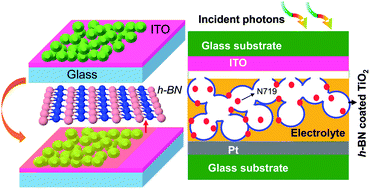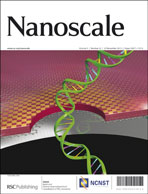2D layered insulator hexagonal boron nitride enabled surface passivation in dye sensitized solar cells
Abstract
A two-dimensional layered insulator, hexagonal boron nitride (h-BN), is demonstrated as a new class of surface passivation materials in dye-sensitized solar cells (DSSCs) to reduce interfacial carrier recombination. We observe ∼57% enhancement in the photo-conversion efficiency of the DSSC utilizing h-BN coated semiconductor TiO2 as compared with the device without surface passivation. The h-BN coated TiO2 is characterized by Raman spectroscopy to confirm the presence of highly crystalline, mixed monolayer/few-layer h-BN nanoflakes on the surface of TiO2. The passivation helps to minimize electron–hole recombination at the TiO2/dye/electrolyte interfaces. The DSSC with h-BN passivation exhibits significantly lower dark saturation current in the low forward bias region and higher saturation in the high forward bias region, respectively, suggesting that the interface quality is largely improved without impeding carrier transport at the material interface. The experimental results reveal that the emerging 2D layered insulator could be used for effective surface passivation in solar cell applications attributed to desirable material features such as high crystallinity and self-terminated/dangling-bond-free atomic planes as compared with high-k thin-film dielectrics.


 Please wait while we load your content...
Please wait while we load your content...